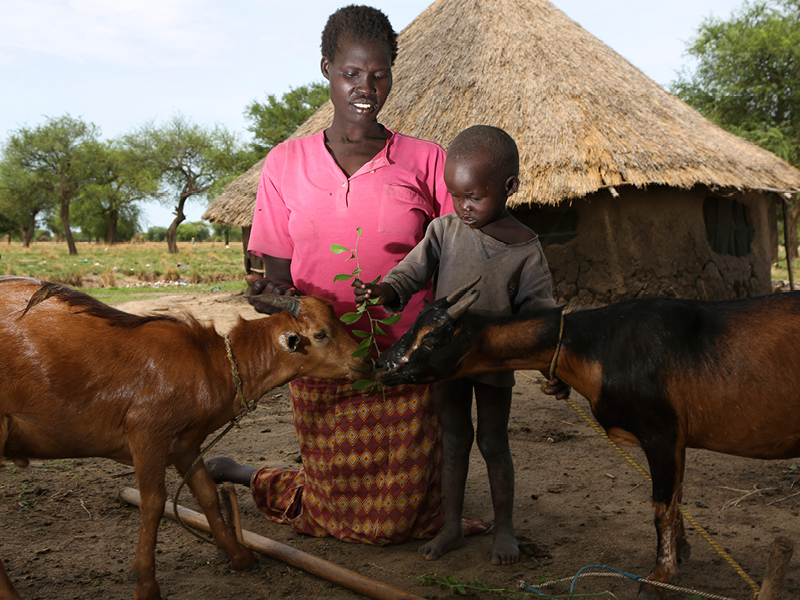
Editor’s note: This piece was written and posted prior to the outbreak of violence in Juba on July 8 and does not reflect these developments.
I recently returned from South Sudan. As the newest country on Earth, this place should have been full of hopes following its independence, but instead the new country continues to struggle with political rivalries, violent conflict and massive displacement.
For several generations, South Sudan has experienced almost continuous conflict leading to extremely low levels of infrastructure, agricultural productivity, market development, literacy and public health.
The latest civil war has affected different communities in different ways. In some regions, such as Unity, conflict and insecurity have become a daily fact of life. In others, such as Lakes, Jonglei and Eastern Equatoria, the civil war has served to exacerbate and militarize inter-group tensions and traditional resource conflicts, including those over cattle and grazing territory.
Northern Bahr el Ghazal, which was largely unaffected by direct military confrontation, has witnessed recent violence around Wau triggered by a growing tide of returnees and internally displaced persons—straining already limited local resources.
When control over scarce resources or economic assets can be a matter of life and death, even minor disputes can lock subsistence communities into a lethal cycle of violence and retribution.
Solutions must come from within the community based off of their needs. Programs need to offer different things to different people, whether that may include vocational training, micro-credit or other assets.
The resilience-livelihoods connection
Despite these struggles and the many reasons to lack hope, there is a powerful counterweight to conflict in the country—the resilience of many South Sudanese. It was enlightening to see the smiles of women and children as we steered outside of central Juba for walks in local villages along White Nile.
That people still smile as they struggle to survive and earn a livelihood amid the chaos is a reminder that many individuals and communities demonstrate incredible resilience. These communities have developed strong coping mechanisms around their traditional and religious norms, supported by joint asset recovery planning and implementation, which development projects can build upon to help foster stability.
According, to the 2015 United Nations Development Programme report on South Sudan “Search for a New Beginning,” nearly two-thirds of those surveyed nationwide lost a close family member due to the recent conflict, and the same number experienced damage or loss to their homes.
Many have also lost their livelihoods, which in several ways can equate to a loss of identity and purpose. This is exacerbated by displacement due to conflict and compounded by exposure to trauma.
Yet, as evidence suggests, livelihoods interventions, along with education, are the strongest predictors of recovery after a conflict. For example, in communities most affected by the Lord’s Resistance Army conflict in Northern Uganda, livelihoods occupation and the level of education of a head of household were shown to correlate to the household’s ability to improve household assets and food security.
Keys to conflict-sensitive livelihoods programming
In complex environments such as South Sudan, well-designed and conflict-sensitive livelihoods interventions, along with asset recovery, should foster socialization, reduce anxiety, revive positive memories and start laying the foundation for shared values and identity.
Solutions must come from within the community based off of their needs. Programs need to offer different things to different people, whether that may include vocational training, micro-credit or other assets.
A participatory process is needed to identify a community’s main challenges and then encourage the community’s key change agents to facilitate addressing those challenges. The starting point for program design is such a community-based process that enables a discussion among community members about their particular economic environment as well as the psychosocial effects of conflict and peoples’ experiences.
Relationships are key factors in rebuilding traumatized communities—supportive community and peer relationships are foundations for wellbeing. Further, only local peer groups and communities have the power to define a key problem, such as the need to reintegrate youth soldiers, and take steps to address it through individual and collective action.
Healing takes time; there are no “quick fixes”. The reality is that people respond to initiatives differently based on their vulnerabilities. Similarly, programs too must respond and adapt differently to new realities on the ground. Most importantly, it is critical to build up local capacities and utilize already existing resources.
Angelina Tracy is Business Development Director for the Economic Growth Division at Creative Associates International. She is a specialist in rural development & livelihoods.
For more information on Creative’s resilience and livelihoods work, click here.
Click to read about our previous projects in Colombia, Yemen and South Sudan.

